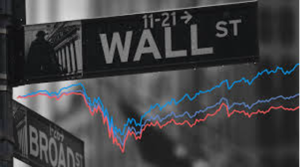
Just Got Back from a Great Family Vacation on Grand Cayman Island…
I’m back from a week in Grand Cayman with the immediate family: K, our three sons, their spouses, and six grandkids (two each). Happy to be home.
Not that I did not enjoy my time in the blistering heat of that island of sand about an hour’s flight from Miami, just southwest of Cuba and northwest of Jamaica.
Grand Cayman is a prototypical beautiful Caribbean getaway, with soft white sand beaches and crystal-clear blue and green water.
I remember it from the 1980s…

Seven Mile Beach on Grand Cayman Island, circa 1984
Back then, the population was about 40,000 people and the largest hotel was the Holiday Inn, which had 80 rooms. I wrote a sales letter then promoting an investment conference on the island that my boss wanted to host. I think the conference fee was $700, and we were aiming at getting 100 people to show up. When, looking at the sales report a week later, we realized that we had 700 sign-ups, we had to break the conference into two, one after the other, and we had to find accommodations for all those people. We filled every little hotel and motel, and even put some guests in private homes. It was an insane crash-course introduction to the investment conference business, which is as much about the comfort and amusement of the attendees as it is about the quality of information and advice they are receiving.
I could write a book about all the frights and surprises and misadventures we lived through. But by working 20 hours a day for 15 days straight, our little crew of six people managed to pull it off, with both the attendees and the speakers giving us great reviews on our post-conference questionnaire. A great relief to us all.
My boss chose Grand Cayman because it was known as an international banking center and a “tax haven,” two things I knew nothing about at the time, and still maintain a high level of ignorance about, despite spending the intervening years publishing lots of economic and financial content.
Back then, the island had a population of about 40,000 and 400 banks and trust companies. Today, it has a population of almost 80,000 and 600 banks and trust companies. If my mental arithmetic is right, that is one bank or trust company for about every 130 residents.
So, it’s still very much an international banking center, although it no longer serves as a tax haven because of US banking laws and regulations initiated about ten years after we held our events there. The changes were made, I’ve read, to put an end to the money laundering and tax dodging that was systemic to the Caribbean/Miami cocaine industry that exploded in the mid 1980s.
But I might have to give myself a bit of credit for those restrictions since the advertisement I wrote to attract investors to our conference mentioned that they could “write off” the cost as a business expense while they learned how to “take advantage of legal tax reduction schemes.”
That was 100% true. But I presume it did not read well with the IRS and certain Congress people as I was told that it was introduced into the Congressional Record as part of a campaign that later disallowed individual investors from deducting investment conference expenses. (Sorry, guys.)
As the banks, the trust companies, and the population grew, so did tourism. Again, I’d like to give myself some credit for this since our conference was the largest-ever two-week incursion of tourism that had ever happened to Grand Cayman. Today, banking is still its largest industry, but is followed very closely by tourism, as you can see from the current photo of Seven Mile Beach below.

Seven Mile Beach 2024
Nowadays, there are daily Miami/Grand Cayman flights, which are primarily filled with US and Canadian citizens coming to enjoy the many natural attractions that the island always had but were known only to the locals in the ‘80s because the visitors then were staying at the Holiday Inn and having meetings with bankers and trust experts in Georgetown, the capital city.
Here is where we stayed – the Ritz Carlton, which actually sits on top of the old Holiday Inn.

And here is what Georgetown looks like now – a bit busier and more colorful than it was in the 1980s.

There’s a lot to enjoy in Grand Cayman, including swimming with stingrays, visiting the underground “Crystal Caves,” walking the Mastic Trail, and diving the wreck of the USS Kittiwake (an artificial reef teeming with marine wildlife).
But, as I said, I’m happy to be back.




